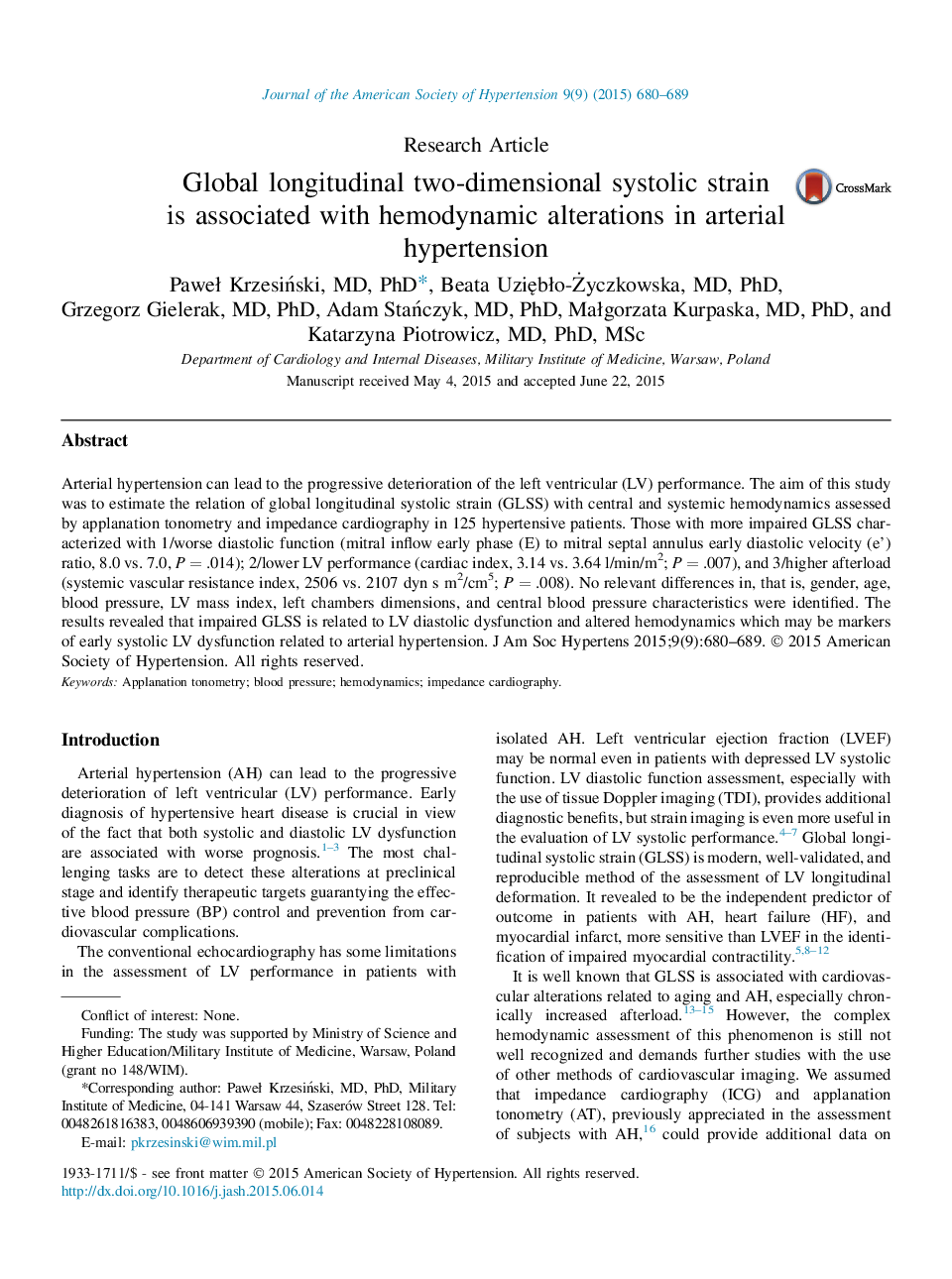| Article ID | Journal | Published Year | Pages | File Type |
|---|---|---|---|---|
| 5983541 | Journal of the American Society of Hypertension | 2015 | 10 Pages |
â¢Applanation tonometry and impedance cardiography are useful in a clinical assessment.â¢Hypertension is related with complex hemodynamic disturbances, even at early stage.â¢There is an association between left ventricular (LV) function and systemic hemodynamics.â¢Impaired LV systolic strain is related to its diastolic dysfunction.â¢Impaired LV systolic strain is related to increased afterload.
Arterial hypertension can lead to the progressive deterioration of the left ventricular (LV) performance. The aim of this study was to estimate the relation of global longitudinal systolic strain (GLSS) with central and systemic hemodynamics assessed by applanation tonometry and impedance cardiography in 125 hypertensive patients. Those with more impaired GLSS characterized with 1/worse diastolic function (mitral inflow early phase (E) to mitral septal annulus early diastolic velocity (e') ratio, 8.0 vs. 7.0, PÂ =Â .014); 2/lower LV performance (cardiac index, 3.14 vs. 3.64Â l/min/m2; PÂ =Â .007), and 3/higher afterload (systemic vascular resistance index, 2506 vs. 2107Â dyn s m2/cm5; PÂ =Â .008). No relevant differences in, that is, gender, age, blood pressure, LV mass index, left chambers dimensions, and central blood pressure characteristics were identified. The results revealed that impaired GLSS is related to LV diastolic dysfunction and altered hemodynamics which may be markers of early systolic LV dysfunction related to arterial hypertension.
